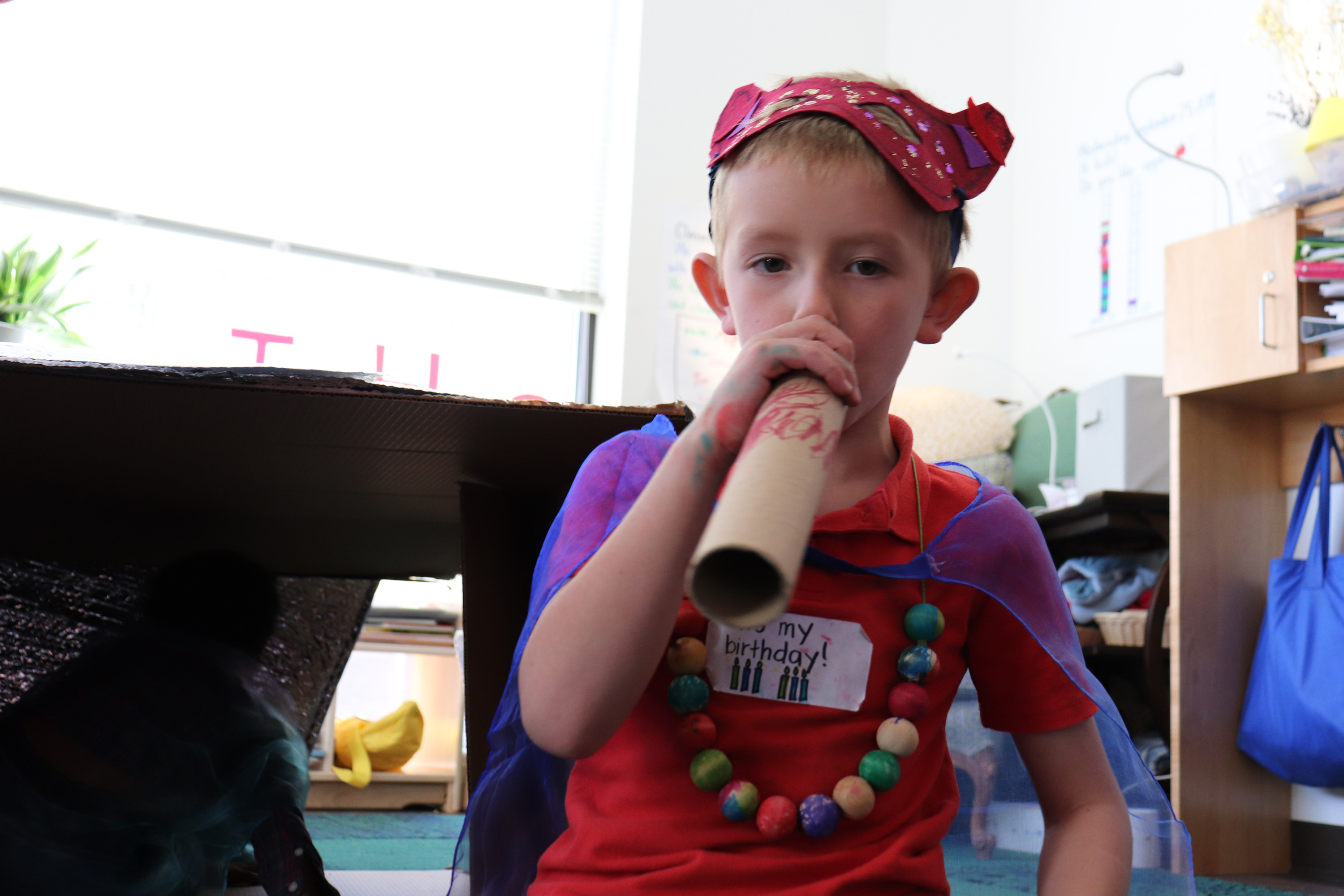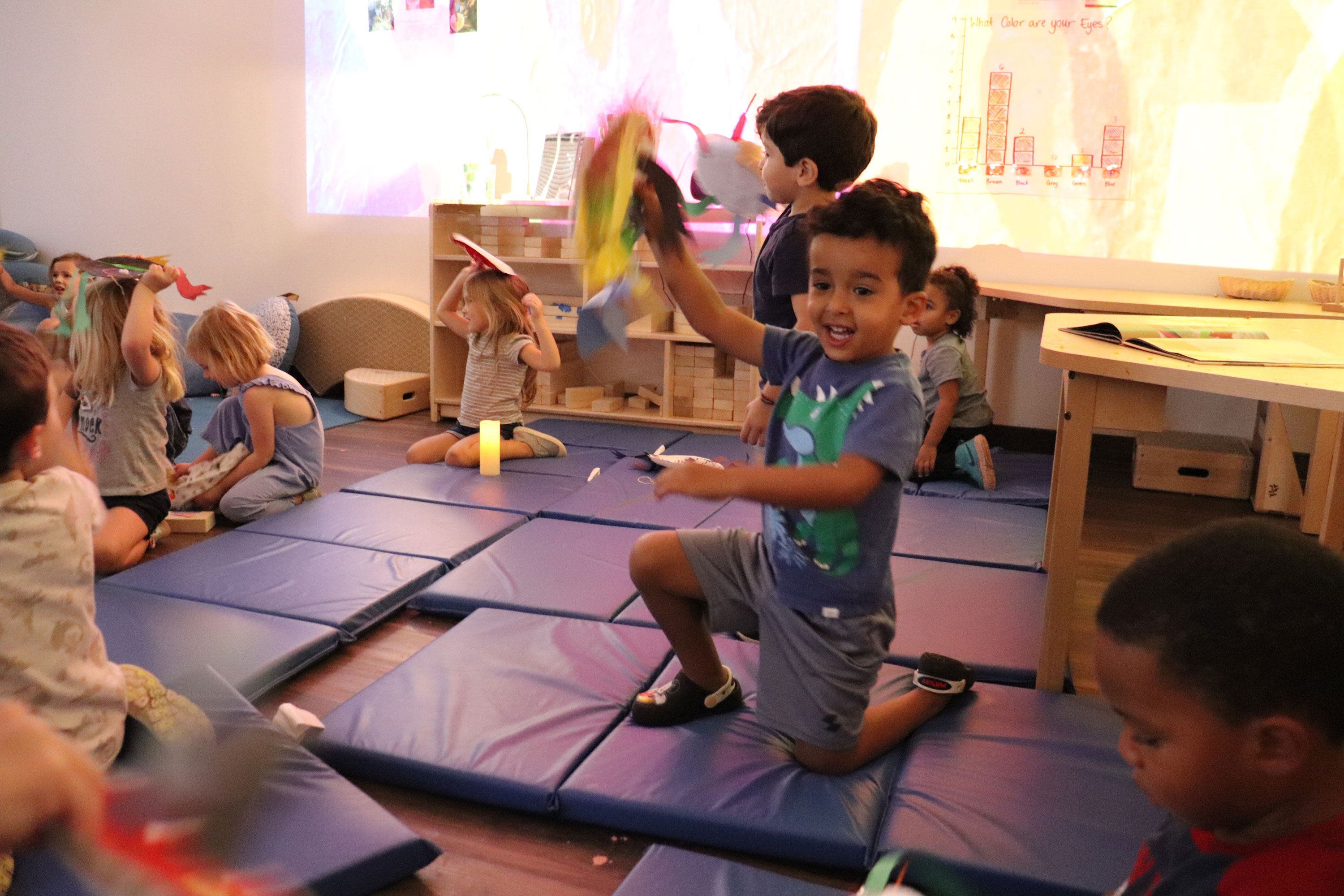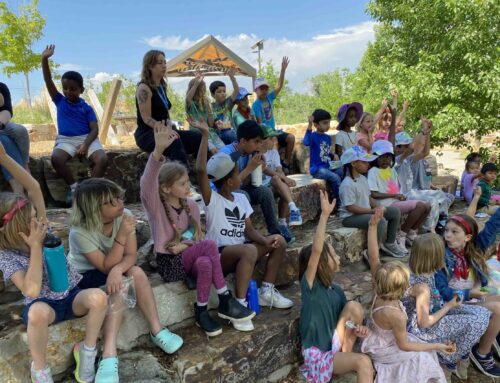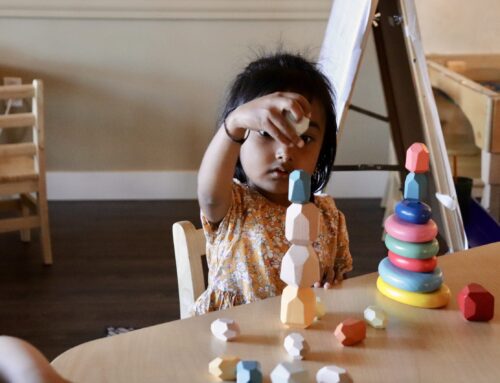
Hello everyone!
We are already diving into our second inquiry arcs. Our three and four year olds are investigating communities, and our kindergartners are exploring weather, mythology, and gender – we are excited to see where they go with these explorations. As always, our goal is to follow our students’ lead as they engage with new information and materials. We can teach the same important skills through a variety of content, and students will learn more deeply when they care and when they feel a sense of belonging and accountability.
I’ve been thinking a lot about the skills our students need to develop in order to be prepared for the next stages of their lives. We are in the midst of what has been dubbed the Fourth Industrial Revolution. As the name implies, this means there have been three industrial revolutions before this. The first occurred in the 18th century with the advent of steam power. The second, at the turn of the twentieth century, involved mass production and adoption of early technology. The 1970’s ushered in the third with an enormous increase in computer and internet use. And the fourth, which is occurring right now, involves artificial intelligence and automation. Essentially, we have been able to create machines that can do many of the jobs we used to need humans to do, and so the kinds of jobs that exist now are vastly different than even twenty years ago and will be even more different in twenty years. In fact, the World Economic Forum has predicted that one-third of today’s workforce will need to find new occupations by 2030, just over ten years from now.
Additionally, some research shows that the kindergartners of today will live longer lives, retiring later and thus moving through multiple jobs and even careers. Gone are the days of graduating from college and finding an employer, working with that same employer for 40-plus years, and then retiring like clockwork at 65. Our young students will need to be lifelong learners who can nimbly move among different workplace environments and understand what skills are needed where. The skills they will need to make these transitions go far beyond traditional academic areas.


The World Economic Forum report lists skills needed in the workforce in 2015 and 2020. While several skills show up on both lists, their level of importance shifts dramatically. Most notably, creativity has jumped from tenth on the list in 2015 to third in 2020. The three skills deemed most important in 2020 are complex problem-solving, critical thinking, and creativity. Also interesting is that emotional intelligence doesn’t appear at all on the 2015 list but is number six on the 2020 list. And cognitive flexibility is also a new skill listed on the 2020 list. Who knows how this list will change by the time our youngest students graduate from college (2036 for those who are counting!).
So what does this mean for us, as educators and as parents? How can we ensure that our students are developing these important skills? Ironically, school experiences often have the opposite effect on students, who enter the school system filled with curiosity and creative ideas but leave with a fixed mindset and, often, an inability to think outside the box. There’s a famous activity involving asking teams to build the tallest possible tower using only spaghetti, tape, and string. The one rule is that it has to hold a single marshmallow. When you give the activity to adults, what typically happens is the group spends the entire time discussing the best way to build the tower, then very quickly builds and puts the marshmallow on right as time is up. And what also typically happens is that the tower keels over with the weight of the marshmallow. In contrast, when we give kindergartners this activity, they prototype right away and fail quickly and often, thus learning from their mistakes and trying again. Their ideas are creative and free-flowing.
Sadly, our educational system has managed to drain many students of this creativity and curiosity by focusing on memorization and standardization. This no longer works in the Fourth Industrial Revolution (frankly, I would argue that it never worked, and I’d guess that John Dewey and Maria Montessori would agree!). In any case, though, we instead need to help cultivate this curiosity and creativity. Here are some ways we can do this together:

1. Foster imagination in our students. At Compositive Primary, we do this by asking questions all the time. “What if” questions are a great way to help prime students’ curiosity. What if we got a letter from an alien asking us about our community? What if we had superpowers that could help our classmates and our families? What if we had emotion monsters who came to visit us whenever we were feeling angry or sad? By asking our students to imagine a world of possibilities, we encourage them to become researchers and to yearn to explore.

2. Teach our students that mistakes are valuable and help us grow and understand the world better. People say this a lot, but traditional school settings don’t often allow for mistakes, or at least for them to be viewed as okay and even helpful. Think back to the marshmallow tower story. The kindergartners succeed in that activity because they are willing to fail fast and fail often. In order to think entrepreneurially, you must be willing to try, and you must be willing to fail. Students in our classrooms interact with materials in an open-ended manner that allows them to create experiments and test them out over and over. I recently watched a group of students work together to create a tunnel with blocks. When things didn’t work the way they wanted, they simply picked the blocks back up and tried again, talking through strategies with one another.

3. Encourage students to challenge the status quo. Often, younger students who question authority are viewed as “problem kids” in the classroom, and once they have that label, some teachers won’t give them a chance. Instead, teachers need to be curious about kids just like we ask them to be curious. We need to help them question things and support this critical thinking so they can learn to discern what information is meaningful and valuable.
4. Help students develop emotional intelligence in ways that are integrated into our daily lives and routines. When students have discussions about how they are feeling or how others are feeling, they cultivate empathy and begin to understand how to read how others are feeling. They also begin to understand that feeling different emotions is okay, and they learn how to recognize and regulate these emotions. Students in one Compositive classroom read the book Ahn’s Anger and then created their own emotion monsters and interacted with them. Activities such as this help our students develop the important skill of emotional intelligence.

If we can work together to help our students cultivate creativity, critical thinking, and emotional intelligence, we can help prepare them for the world ahead, both as students and as citizens of the world. I have every confidence that the 2030’s will be filled with Compositive Primary graduates who are striving to make a real difference, and I can’t wait to see them in action!
To read more about the World Economic Forum’s report, click here.







